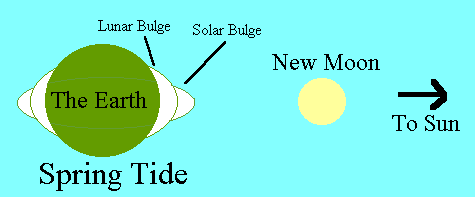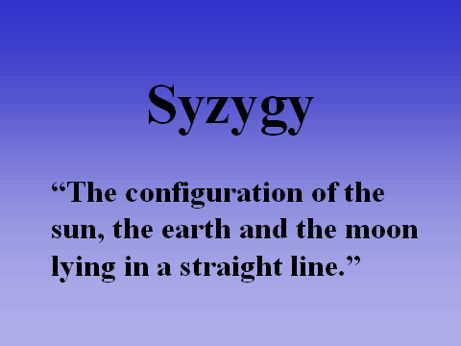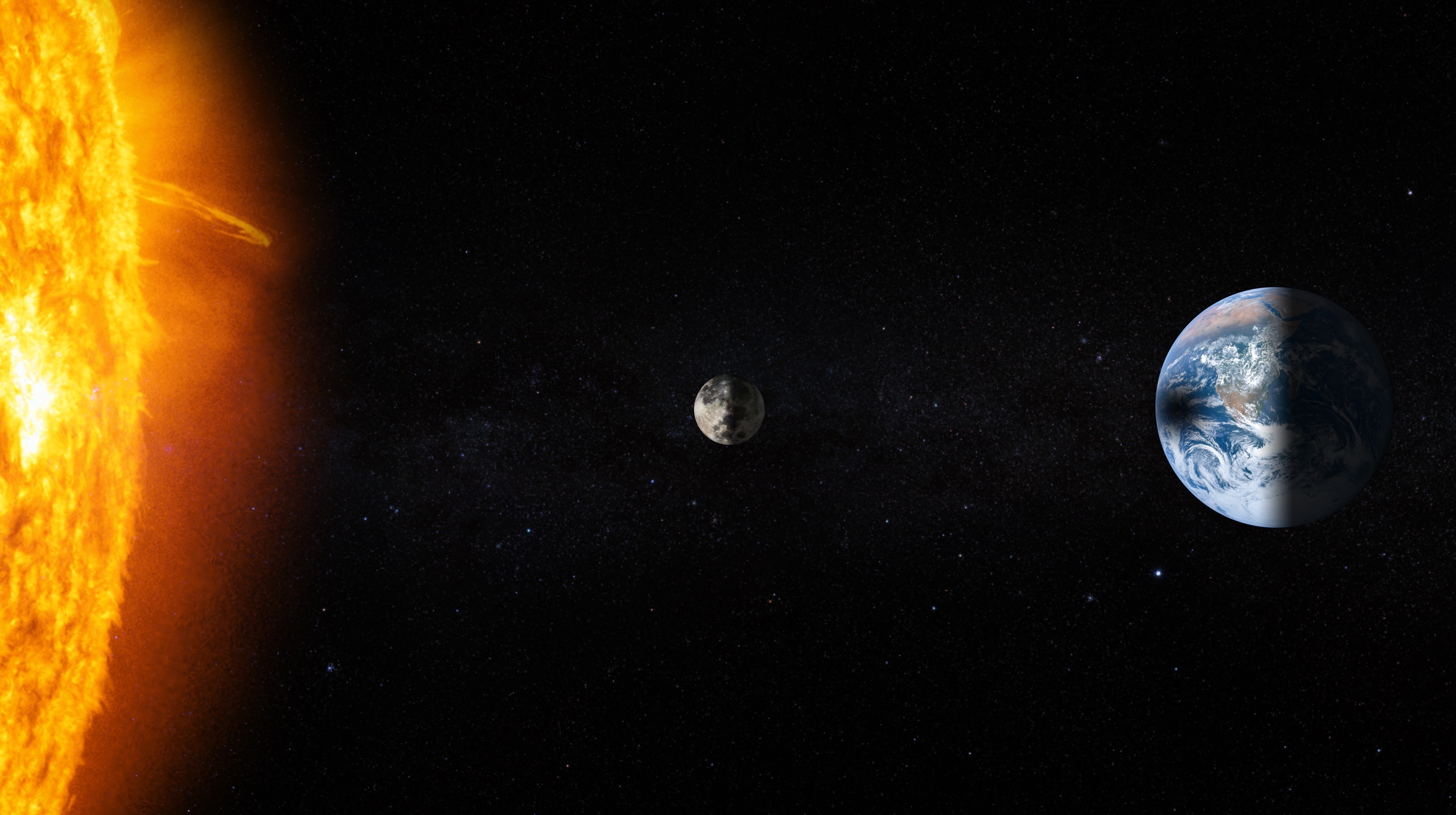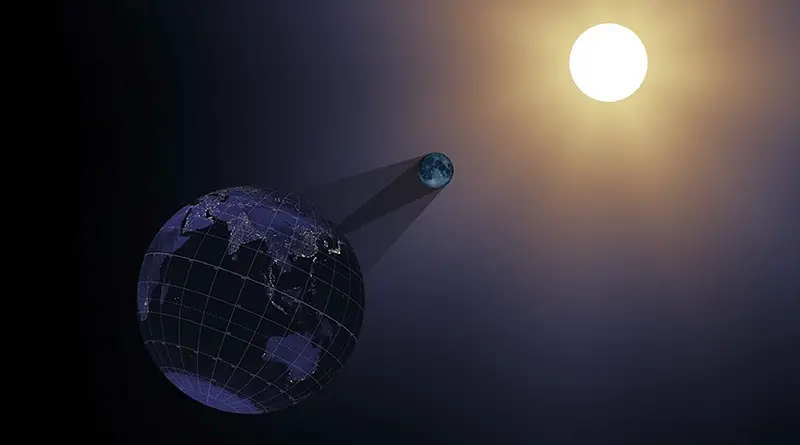You’ve probably witnessed a syzygy without knowing that’s what it was. That’s because what people call a “supermoon” is more accurately described as a “perigee syzygy.” Which is quite fun to say. Syzygies involving the Earth, moon, and sun happen every 14.5 days. What is a Syzygy?
Syzygy refers to the alignment of three celestial bodies, typically the Earth, the moon, and the sun, in a straight or nearly straight line. This configuration leads to phenomena like eclipses and is associated with the occurrence of spring tides, where tidal forces are maximized.
Whenever we experience a new Moon or a full Moon, the Earth, Sun, and Moon are in alignment. That is the basic definition of a syzygy: the alignment of three or more celestial bodies. In the case of Earth-Moon-Sun, this sometimes results in an eclipse of the Sun or the Moon.
Introduction:
Embark on a cosmic journey to understand the celestial phenomenon of syzygy. In this exploration, we delve into the definition and fundamental meaning of syzygy, unveiling the intricate alignments of celestial bodies. This concept not only captivates astronomers but also inspires poets and philosophers alike. Join us as we demystify syzygy, ensuring that you grasp its essence and remember it forever. Welcome to the astronomical wonder of syzygy.
The Fascinating Word of Syzygy: Unveiling its Definition and Usage
The term syzygy possesses a certain allure that grabs attention with its uncommon alignment of vowels and consonants, inviting curiosity about its definition and meaning. Originating from astronomy, the word syzygy describes a rare celestial alignment where three or more celestial bodies are positioned in a straight line. This phenomenon occurs during eclipses and new or full moons, where the gravitational interplay defines a significant aspect of celestial mechanics. However, syzygy isn’t confined to the heavenly spheres—it also finds its place in diverse fields ranging from biology to poetry, showcasing its versatility as a word.
When we delve into the usage of this word, we immediately notice that syzygy’s meaning extends beyond astronomy. In biology, it denotes the pairing of chromosomes during meiosis, a critical process in sexual reproduction. Additionally, in literary works, a syzygy can signify a pairing of opposite but connected concepts or characters, enriching the text with deep, symbolic connections. It’s a word that, once learned, enriches one’s vocabulary with a multifaceted concept that resonates across various scientific and artistic disciplines.
Despite its specific definition, the beauty of the word syzygy lies in its symbolic implications and the word’s ability to evoke a sense of unity and confluence. Whether it’s the earth, moon, and sun during an eclipse, or opposing themes intertwining in prose, syzygy offers a descriptor for those moments of convergence that are otherwise difficult to encapsulate.
Spring Tide and Syzygy: Understanding the Connection
When looking into the dynamics of tidal forces, the term “spring tide” often surfaces in harmony with the concept of syzygy, painting a picture of celestial alignment with profound effects on our
blue planet. A syzygy represents a straight-line configuration of three celestial bodies, an event that occurs when the moon aligns perfectly with the sun and Earth. This alignment, occurring approximately every new moon and full moon, acts as a catalyst for spring tide conditions, where the gravitational pull of the sun synergizes with that of the moon, magnifying the tidal forces exerted on Earth. 
On the day of syzygy, when the moon and sun pull in concert, Earth witnesses the strongest gravitational forces, resulting in elevated high tides and diminished low tides. It’s during these intervals of a full moon or new moon that the ocean swells in response, generating spring tides that showcase the moon’s substantial influence over Earth’s aquatic cloak. However, it’s not solely a full moon that triggers these events; a new moon, sharing the same straight line with the sun and Earth, can also prompt significant tidal variations.
Understanding this celestial phenomenon enriches our comprehension of the natural rhythms dictating Earth’s coastal environments. As the sun, Earth, and moon dance in cosmic unity, the spring tide emerges as a tangible expression of syzygy’s pull, marking days on our calendars when the sea’s behavior reflects the alignment of these massive celestial objects.
As the moon orbits Earth and the Earth orbits the sun, this triad periodically forms a straight line, beckoning a spring tide to manifest and demonstrating the gravitational harmony among them.
Whether it’s during a full moon’s luminescent spectacle or the discreet intimacy of a new moon, syzygy’s role in spring tides is an enduring lesson of astronomical proportions. As we witness the seas temporarily reach out beyond their usual bounds, it’s a reminder that the sun, moon, and Earth are perpetually in a celestial ballet, with each performance accentuating the potency of these extraordinary alignments known as syzygies.
Syzygy in the Dictionary: Exploring Words and Grammar
The term Syzygy may not feature in our daily vocabulary, but it holds a fascinating position within the main list of English words found in an English dictionary. As a noun, syzygy joins the ranks of countless other English words that pique the curiosity of linguaphiles and learners alike. In any standard English dictionary, syzygy is defined as an alignment of three celestial bodies, a rare occurrence that captivates the gaze of astronomers and poets alike. 
But the usage of this word isn’t limited to the skies; it branches into areas like psychology and biology, demonstrating the richness of English grammar and the breadth of information that dictionaries encapsulate.
Perusing a dictionary reveals the layered significance of words like syzygy, underlining the importance of context in understanding grammar. Its derivation and pronunciation can be puzzling, a testament to the complex etymology that many English words share.
Moreover, syzygy’s definition may vary slightly from one dictionary to another, showcasing the dynamic nature of language and the role dictionaries play in recording these shifts. The entry of such a word in the dictionary serves not just as a repository of information but also as an educational tool that enriches our command of English grammar.
This word also fits neatly into the larger fabric of English grammar by functioning as a noun in sentences. Its grammatical versatility allows it to be used variously—for instance, “When the moon is in syzygy with the earth and the sun, we experience a spring tide.” Hence, the influence of syzygy extends beyond its dictionary definition and into practical usage, illustrating the interconnections between words, grammar, and meaning.

In terms of astronomy, Syzygy describes the scenario in which three or more celestial bodies align themselves roughly in a straight line. Though used commonly about the configuration of the sun, earth, and either a planet or moon, it is not a phenomenon limited only to earth. Even on occasions when celestial bodies involved are not in a line but are scattered around in an unusual formation, it is referred to as a syzygy.
Concerning earth-sun-moon, there are two main forms of syzygy. When the sun and moon are in opposition, they appear on either side of Earth. On the other hand, if the sun and moon are in conjunction, they seem to be very close to each other in the sky. Yes, you guessed it right. Solar and lunar eclipses are special cases of a syzygy.
Which brings us back to April 8, 2024. That’s when the cosmic solar-lunar-terrestrial rumba brings the next total eclipse to North America. The width of the Moon’s shadow that’ll whip over Earth is around 115 miles wide. So if you find yourself inside that path, you’ll see a total eclipse (provided skies are clear, of course!).
What’s more, the Moon will blot the Sun’s light for a respectable 4 minutes 28 seconds (depending on where you are; it’s more fleeting in some locations). For comparison, the total phase of the August 2017 eclipse lasted only about 2 to 2½ minutes.
Conclusion:
In conclusion, the term syzygy embodies a fascinating concept within astronomy and beyond, signifying an alignment of celestial bodies. This alignment, whether involving the sun, earth, moon, or other planetary configurations, has not only astronomical but also cultural and mythological significance. As you carry forward this knowledge on the intriguing phenomenon of syzygy, may it deepen your appreciation of the intricate movements of our solar system and the celestial events that have captivated human curiosity through the ages.

References:
ASP-A Historic Undertaking: Finding Syzygy in the 14th Century
All Science – What is Syzygy?
FAQ’s
Q: What is the definition of syzygy in astronomy?
A: In astronomy, syzygy is defined as a rare celestial alignment where three or more celestial bodies are positioned in a straight line. This phenomenon occurs during eclipses, new moons, or full moons.
Q: How does syzygy affect tidal forces on Earth?
A: Syzygy affects tidal forces on Earth by causing spring tide conditions. During a syzygy, when the moon and sun align perfectly with the Earth, their combined gravitational pull results in elevated high tides and diminished low tides.
Q: Can syzygy occur during both the new moon and full moon phases?
A: Yes, a syzygy can occur during both the new moon and full moon phases. This alignment acts as a catalyst for spring tide conditions, regardless of the moon’s phase.
Q: Does the term syzygy have applications beyond the field of astronomy?
A: Yes, the term syzygy extends beyond astronomy. In biology, it refers to the pairing of chromosomes during meiosis. In literature, it can signify a pairing of connected yet opposite concepts or characters, and it also finds usage in fields like psychology.
Q: How does understanding syzygy enhance our comprehension of celestial phenomena?
A: Understanding syzygy enhances our knowledge of celestial mechanics, the natural rhythms of Earth’s coastal environments, and the gravitational interplay between the sun, moon, and Earth. It provides insight into how these alignments impact Earth and deepens our appreciation of the solar system’s intricate dynamics.

